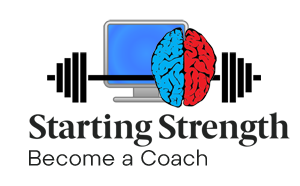The heavier the bar, the more tendency it will have to come back down in a straight vertical line. You must accommodate that line by getting your head out of the way. We don't emphasize this because we find that most people figure it out pretty quickly without having to take time coaching it.
__________________________________________________ _________________________________________
It is a serious misunderstanding of the press technique to think that the posterior chain is somehow involved. The rebound is off the front, the ANTERIOR muscles, from the ribcage and abs down the quads to the knees. Do not think about a backward hips motion or you ruin the timing of the movement. This press has the actual pressing motion starting at the beginning of the movement, not the top of the forehead like a push press or a jerk, so the two are not analogous.










